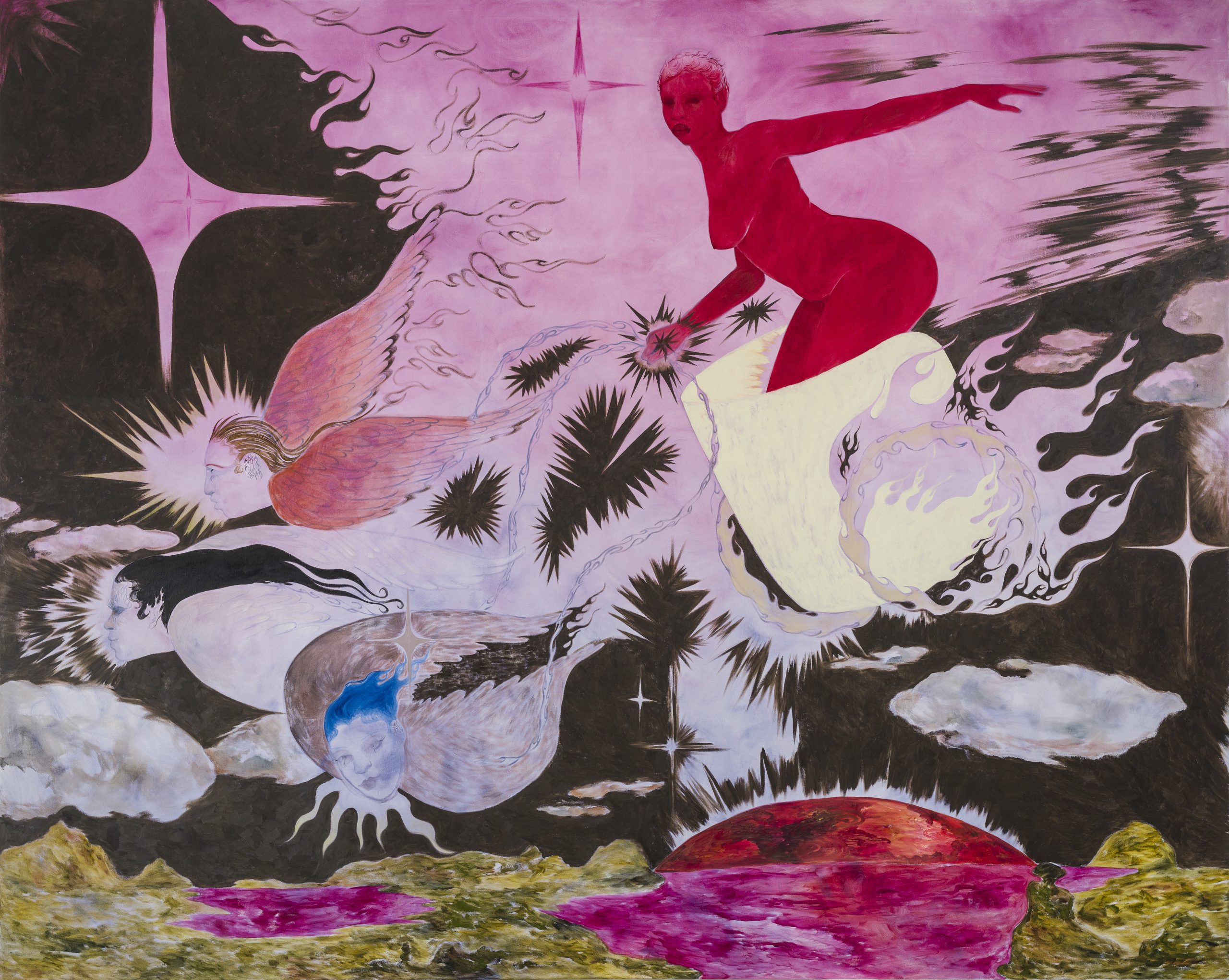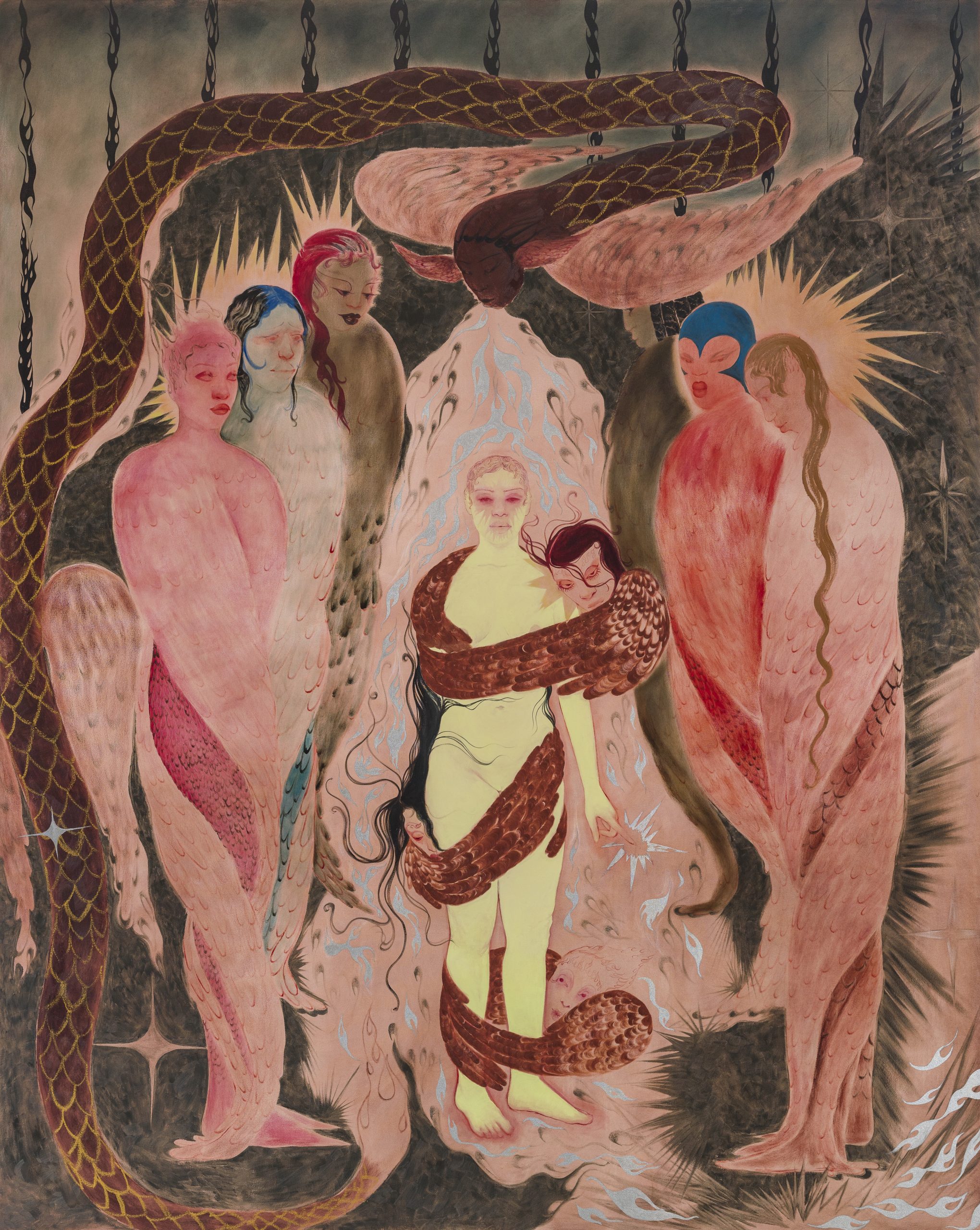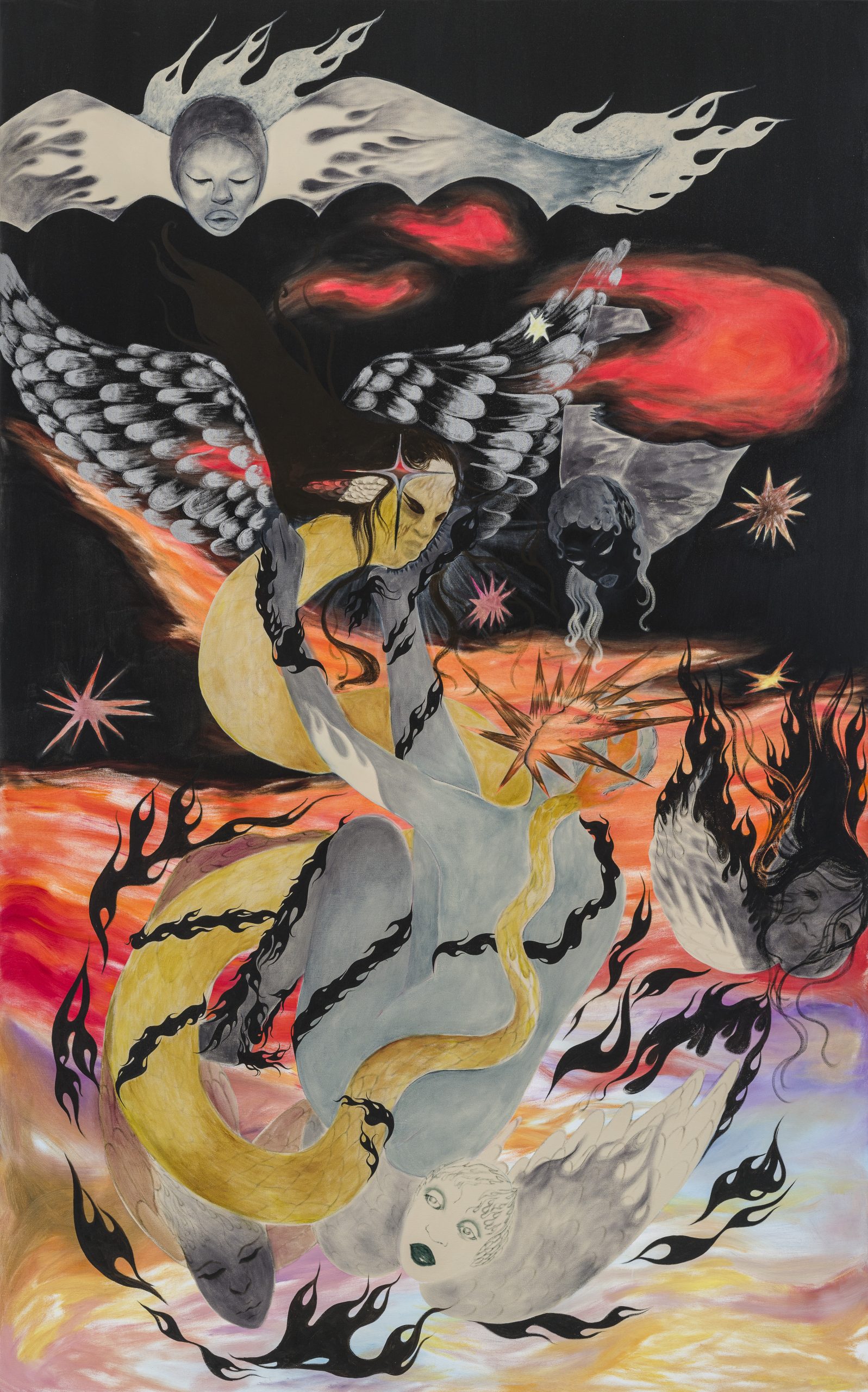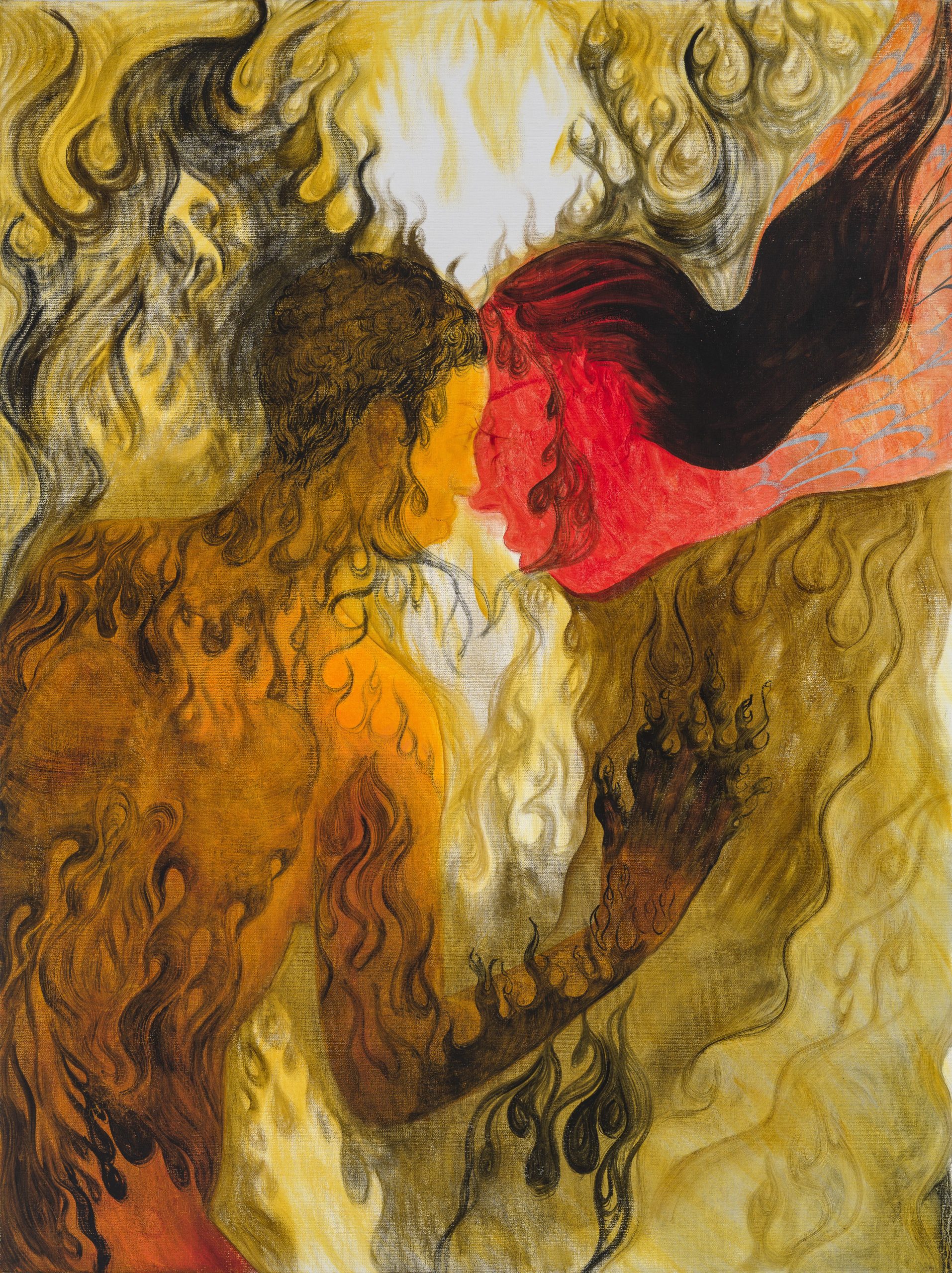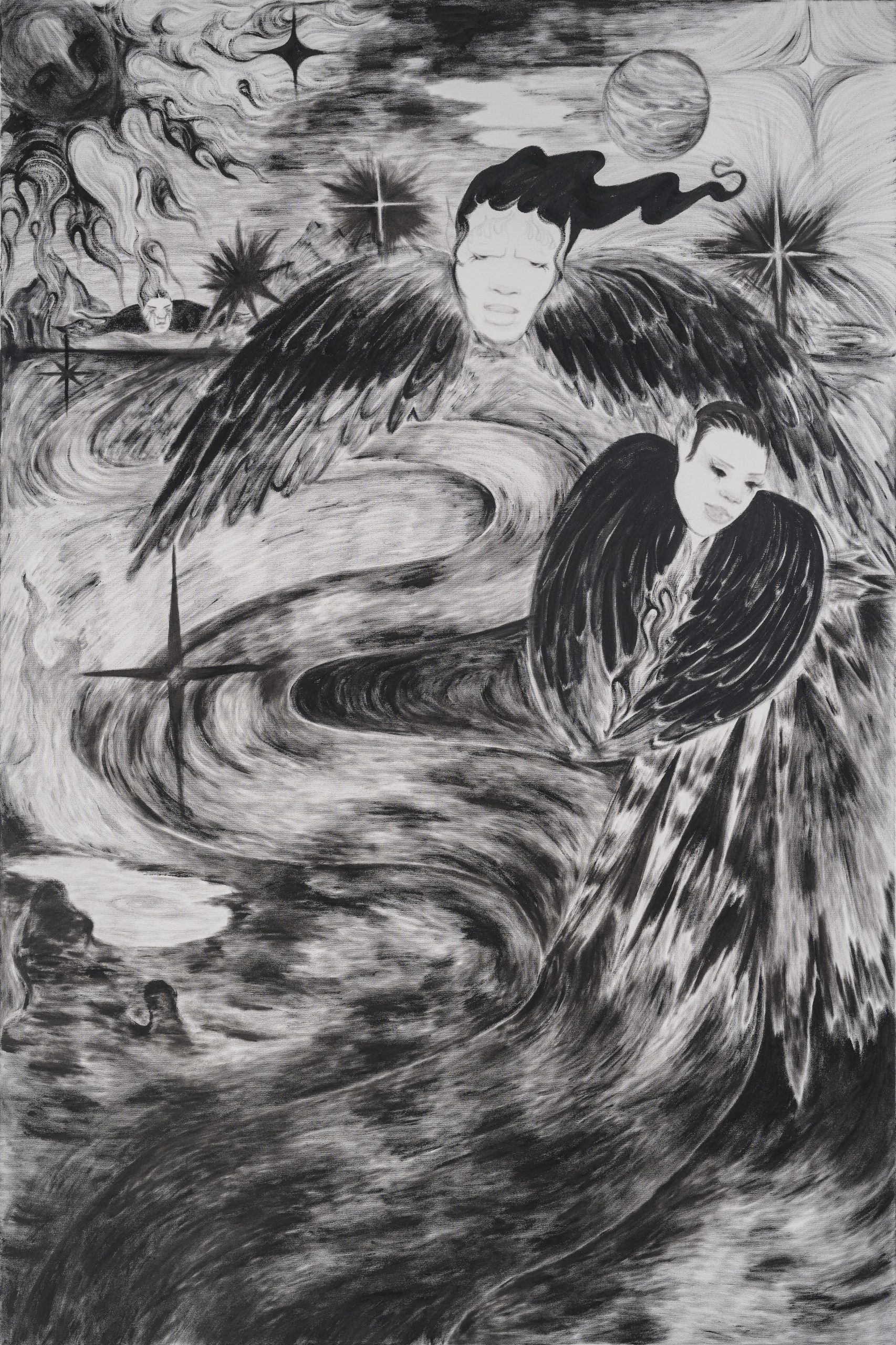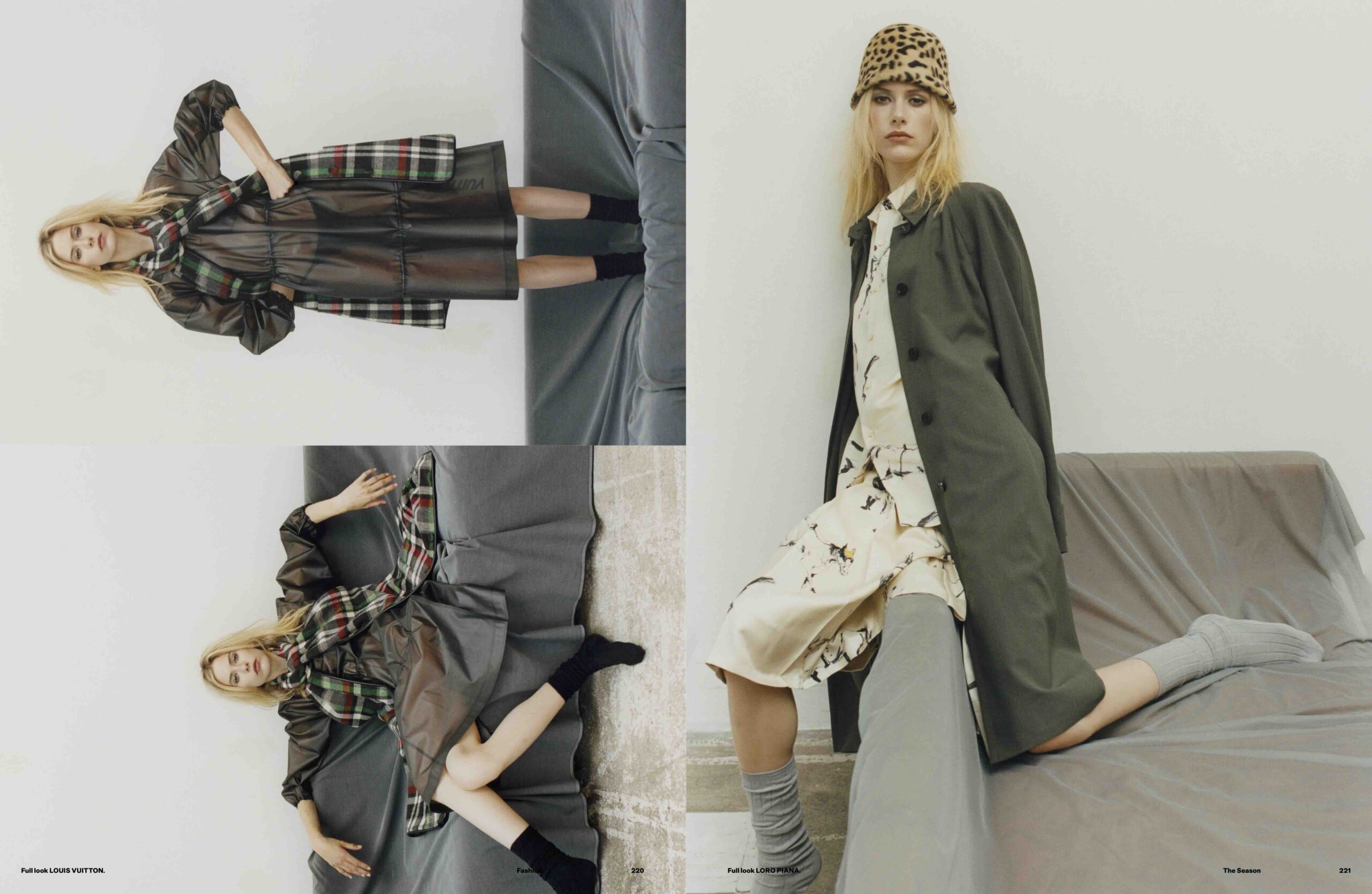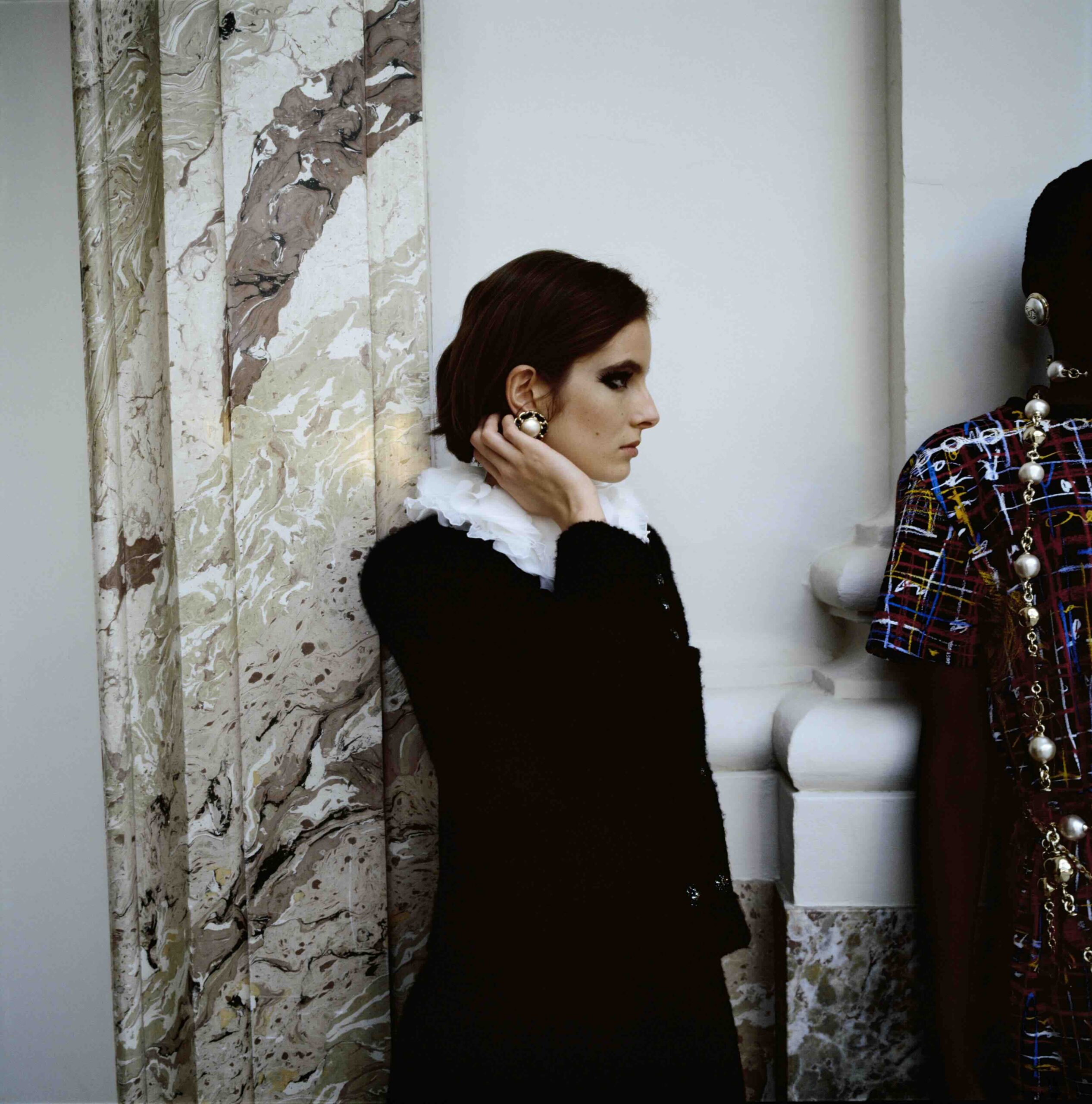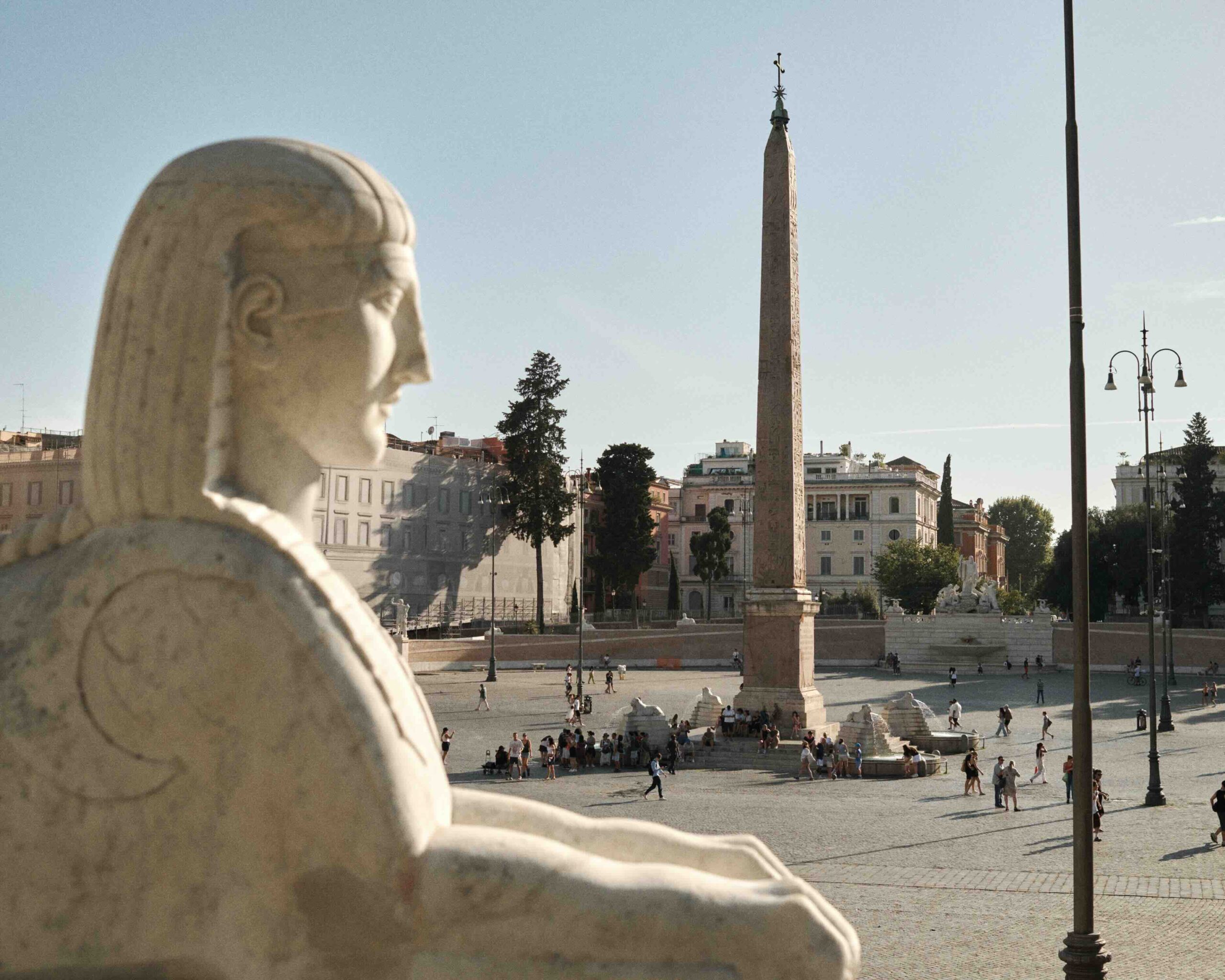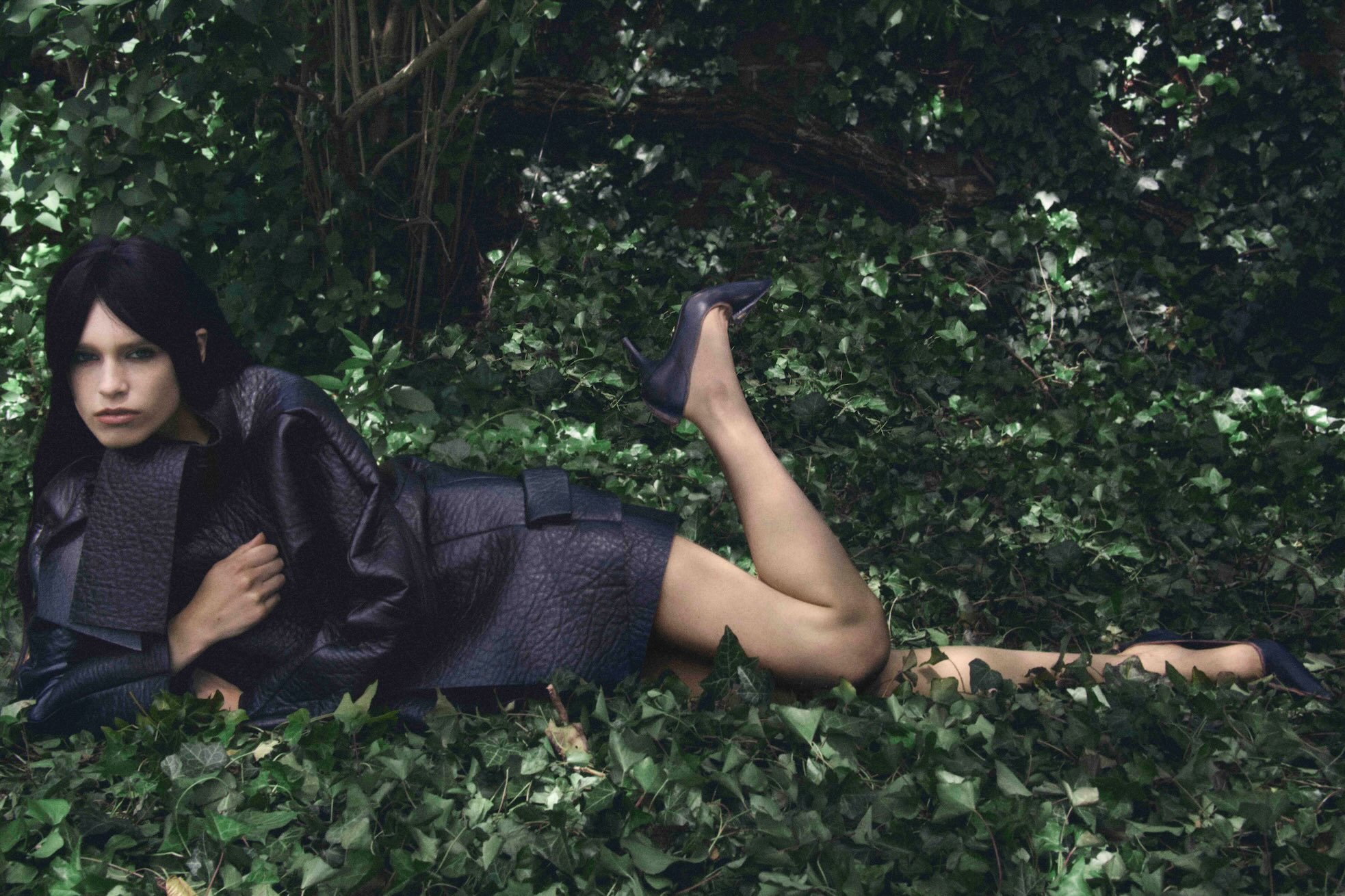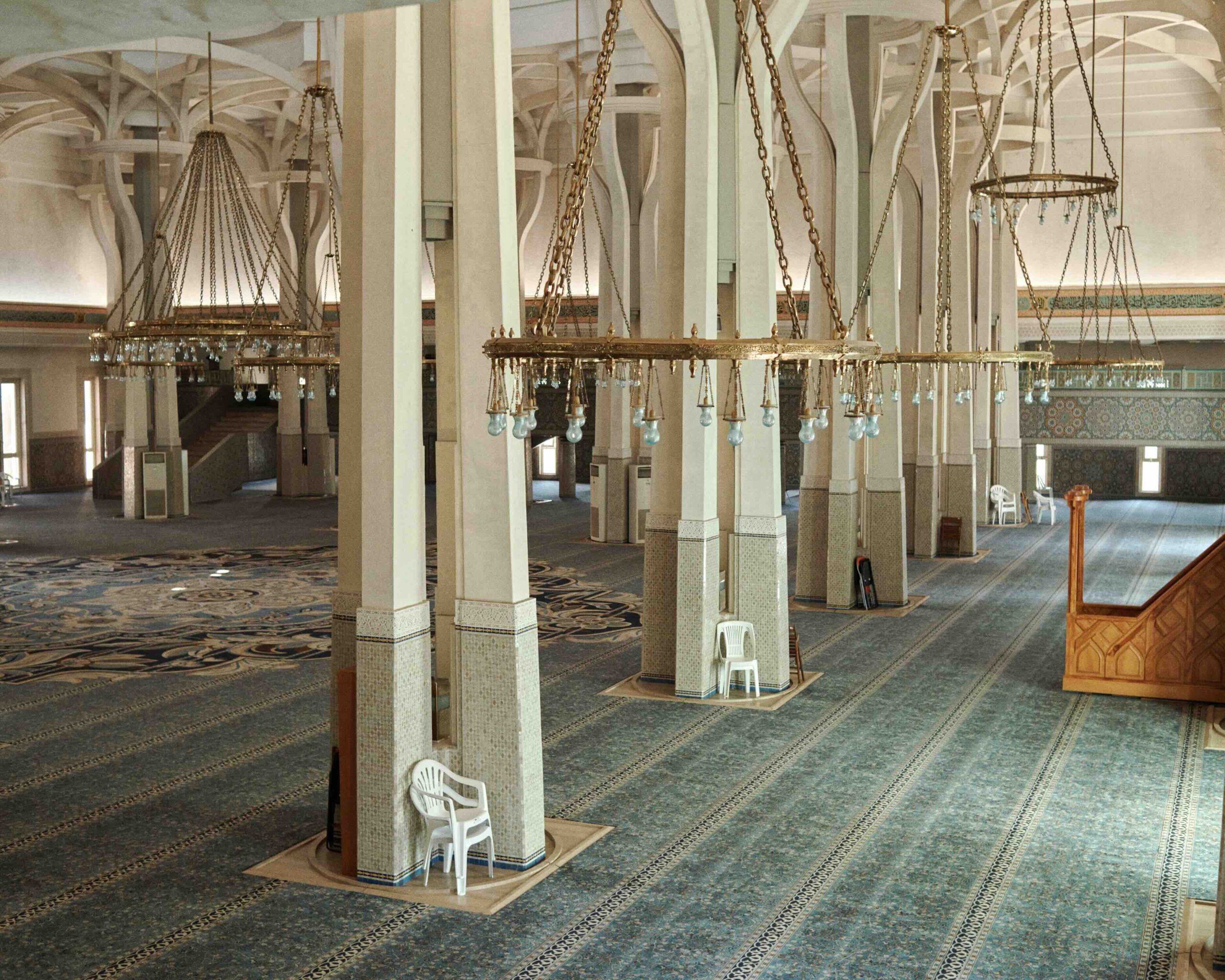HUO You just had an exhibition in New York at James Cohan, right?
NP Yes, I did. It just came down in June.
HUO It’s called Enter the Realm and in those spaces there were paintings, drawings and sculptures. It’s interesting because I’ve been thinking a lot about this idea of portraits and world-building. Can you tell me something about that and the show?
NP I’m always thinking about world building. In Enter the Realm, I knew I wanted to expand upon some of the ways I had previously been working. I wanted to reach into a three-dimensional means of expression and up until then I had done it mostly two-dimensionally. I knew I wanted to make a gate and really create an immersive environment where you can get into the paintings, but also physically experience elements from the paintings. I wanted to create an opening into this world, it was sort of enter at your own risk, enter if you’re welcome, kind of a mix of all that.
HUO What about the title Enter the Realm? In a way it seems the viewer goes more and more into this otherworldly vision, he really “enters the realm”.
NP For me, the titles come close to the end, I have to see the entire work and understand what I’m trying to say, it happens in the doing. It was really a signal to me to go deeper into this world. Sometimes the door is wide open and welcoming, sometimes it’s shut, sometimes I have to kick it down. In this case, it was about entering a space that is not here, a place that is far away.

“I’m always thinking about world building. In Enter the Realm I wanted to reach into a three-dimensional means of expression, and really create an immersive environment.”
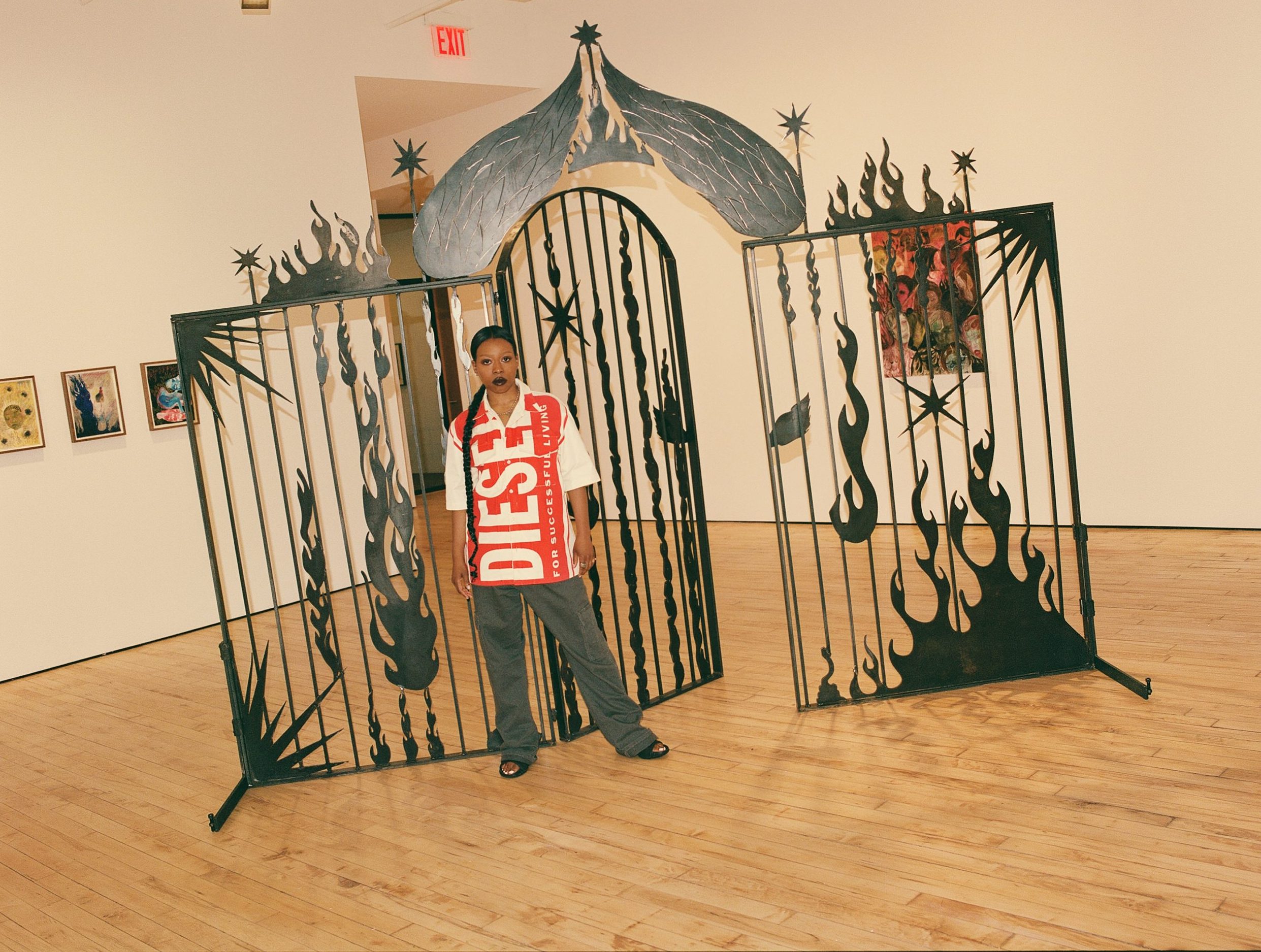
HUO You endow each of your scenes with a catalyst for change. What does this catalyst for change in every painting means to you?
NP When I was making the work, I was asking it, “What are you trying to tell me? What am I seeing? What am I making?” I started to see a theme: change. It became overarching, and it became a character unto itself that was able to move the composition towards things I haven’t done before, such as including a physical environment. It was a way to portray my figures in motion. In each of these worlds, there is a transition that happens, whether it’s emotional or physical, or just in the colors or tones. I realize that there is so much change, both for those characters in their individual stories, but also in the work itself.
HUO Last time we spoke we talked about flames, for example. In these paintings there are also flames and transformation. Can you talk about when did the flames arrive in your paintings?
NP Flames have been around since the beginning, early on I would do a lot of flames and rays of light. For me, it was like a source of heat, it was a compositional element, the flames helped me to understand the space within the paintings. They also create a sense of tension and danger, but also passion. It’s really about transition, when something goes into fire, it comes out changed.
HUO Then the wings, that refer to angels, to transcendence, to transfiguration. When did the wings appear?
NP The wings, like the fire and the serpent creatures, have been a part of my work since the start, but more recently, they started taking on a more obvious shape. In my latest work, you can definitely understand that they are wings. When they first started appearing they were more amorphous but they have changed over time. Now they’re more detailed, they’re taking up more space. They’re evolving alongside the characters and the work.
HUO You connect to the past. How do you invent the future with fragments from the past?
NP I feel that the past is present, even in the future, and it’s all connected. I completely feel that to the core of my being. I do think the past is always with us, so I definitely see that in my work, but it is also about carving out something a little bit new, mixing it all together and doing it again, trying for something better.
HUO When you paint, who are the artists you are painting with?
NP That’s a great way to think about it. I would hope I’m painting with William Blake and of course El Greco. I think when people think about my work, they also think about Bob Thomson. I also must include Belkis Ayón and Titian. With my recent work in particular, I was really invested in shutting everything out, almost like entering a cocoon or chrysalis and just letting things flow through me. I really was intentional about putting blinders on and allowing the work to take me through the journey to get to the final exhibition.
HUO Is Goya important for you?
NP I do think about Goya. I like the desperation in some of his work, it feels frenetic and intense, I can really connect to that.
HUO I read that you grew up surrounded by religious iconography and ecclesiastic stories and there was a connection to your parents country, Haiti. I supposed all that have also been an influence. Can you talk a bit about that?
NP My parents were born in Haiti, I was born in the States. I grew up in a puritanical environment with a specific worldview, where the focus was on the end of the world, the end of everything, and the hope for something better. There was the belief that this existence wasn’t the final stop and our true form would be in another universe. It’s intense, but I think it makes sense that my work is what it is. I’m painting a place far away that I can’t access, and of course that manifests in the apocalyptic undertones of my paintings and sculptures. That sort of language was always part of my upbringing. It’s all full of mystery and that mystery helps me access the work, if I fully understand something then I’m kind of bored.
HUO I was curious about the process of how you paint. You say when you are working on a project you get straight to the end. How do you get to the finish line? Do you have preparatory drawings or sketches, and how does it evolve? And the most complicated question: when is a painting finished?
NP I usually start with a tiny sketch, just some scribbling to find the composition. My next step is to think about the overall color palette, so I usually get a very loose idea of how I want to access color in the painting. Then, I turn my focus to the central figure, which is repeated throughout most of my work. Once I figure out the overall color palette, then I think about what I want, how I want it to appear. I go straight to a sort of underpainting that allows me to make mistakes, to adjust bodies. It’s an intuitive process; I don’t have it all figured out from the beginning but eventually I step back and approach it with a more critical eye. Knowing when a painting is finished is difficult, sometimes it’s like a fight between myself and the painting and sometimes it’s a collaborative kind of effort.
HUO How did you then get close to sculpture?
NP Sculpture feels like a natural progression to me; I went from works on paper to tridimensional paintings, trying to connect physical space with the imaginary. I knew that I wanted to keep going. I felt like the next step was to make painted surfaces that you are forced to interact with, to work with and see all the angles. For Enter the Realm, I created structures; apses, and then the gate. It’s all connected. I want to continue with sculpture because I think it’s an important way to expand the world I’m creating.
HUO I think for an artist there is a desire, and maybe also a necessity to go beyond, it’s interesting that we are in a culture of exhibition making. But there are so many other ways art can be visibile, for example public art and murals. During our last conversation we spoke about chapels, not necessary religious but secular ones. Many artists maybe transcend the idea of the exhibition, and I remember you actually talked about that.
NP I’m still obsessed with the idea of chapels and creating these kinds of spaces. Even when art is commercial, there are still many other ways to approach making work, showing it, and making it accessible. I think there are other conversations that can happen, it’s important to rethink art forms that live beyond that cycle. I think chapels need to be a part of that conversation. When you think about what those spaces are, it is so important to have a meeting place, a resting place, a place to absorb things that transcend the mundane or the quotidian.
HUO I love that idea and of course it would be great to hear if you have any unrealized projects in that direction. Did you do drawings of spaces which are not white cubes, or have you dreamt of that spaces?
NP I don’t have drawings but I definitely have dreams. I’m always wanting to create a sensory experience, where you can feel completely taken away from reality. I love to watch science fiction films, or fantasy, or whatever. I’m looking for escape, and I’m sure other people are as well. It’s a consensual escape, thoughtful, not just escaping life. Entering a place that makes you get goosebumps. I’m always looking for moments that feel like that, and sometimes it’s hard to find.
HUO I read a very nice interview where you talked about the idea of alter-ego that you decide to put on a pedestal, in a material context.
NP You are referring to my protagonist. She is a completely separate being from me and has an existence somewhere I can’t access, except for when I’m painting her. She gives me the gift of appearing to me in a form that I understand, as a creature that shares some likeness to me. As with all the other characters, I see them, and her, as containing multitudes, being so many things, but they choose to come to me in a specific form that I can bring to the canvas. She grows and I grow, but we do that in separate universes, maybe parallel, maybe perpendicular, but we meet at the canvas, on the surface. In the sculpture as well. Placing her on a pedestal is really important to me, it helps me build a world that I want to see.
HUO Beside the pedestal there is also the portal, the gate. Can you talk about your paintings as portals?
NP A portal is an opening into another place. It’s not always open and it could close on you, that completely describes the paintings. I feel that to make them, I need to enter a portal and then they become portals themselves. Enter the Realm was another entry point into that world. Sometimes it’s hard for me to access them, and I have to beg the characters to show me what to do next. Sometimes it flows easily and I feel like maybe there isn’t a portal, maybe I am the portal, myself physically. The portal is a huge element of my work because of its fragility and I can’t take it for granted.
Read the full interview on Muse September Issue 60.
